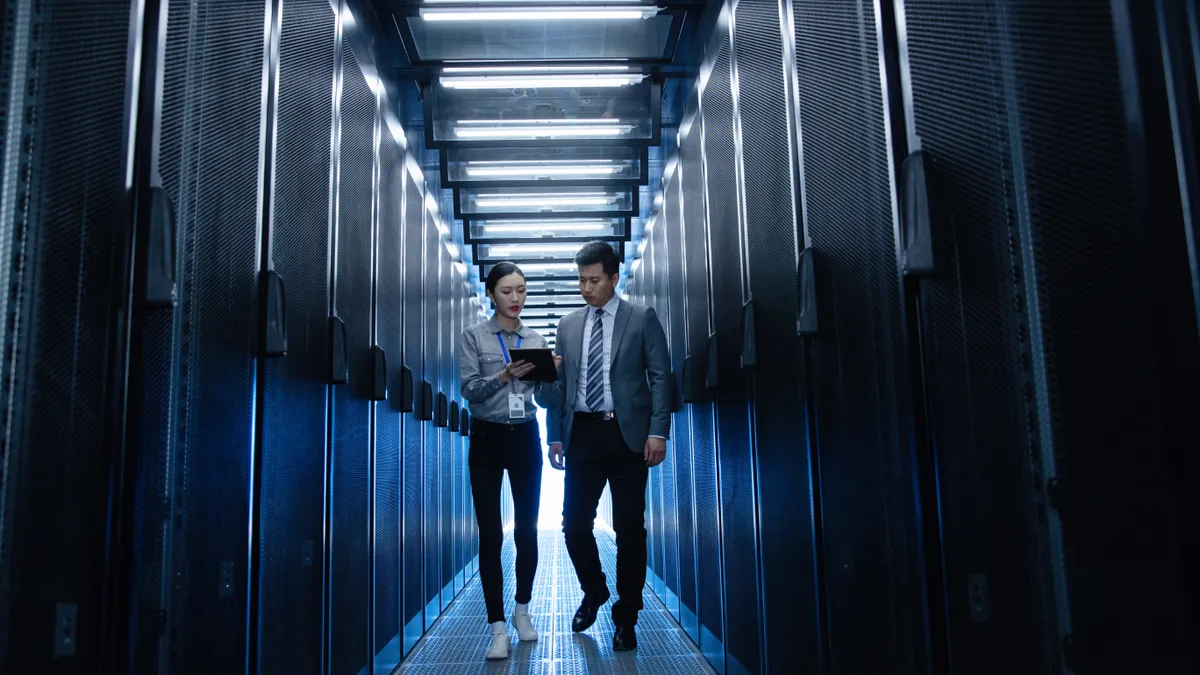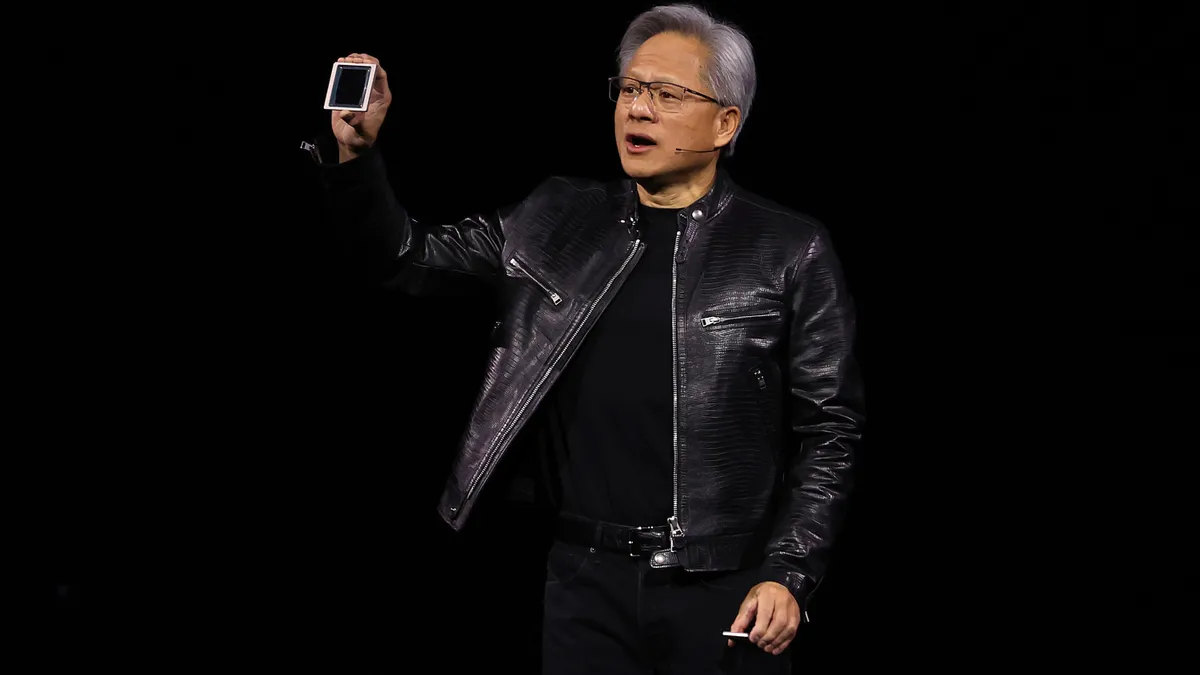CIO Dive sent its first newsletter in July 2015, and since then, the role of technology has shifted in the enterprise.
Obsessive focus on digital transformation and next-generation technology is ubiquitous across sectors. And the CIO influence has grown.
We took a look at five key areas of enterprise technology, comparing 2015 to today.
What are the big changes you've seen? Email us directly at [email protected].
Cloud
2015
It was still the early days, though big names like Johnson & Johnson were ahead of the adoption curve, starting a heavy cloud strategy in 2012.
Companies were already leaning toward hybrid cloud, but companies had varying levels of adoption.
In a relatively even split, about one-quarter of companies were running their first projects, had apps running in the cloud or were already heavy users, according to the 2015 RIghtScale cloud report.
The last quarter of organizations were planning to work in the cloud or had no plans.
2019
The biggest change from four years ago is trust: Cloud first, cloud always is becoming the norm.
Even the U.S. government has a "cloud smart" strategy, which takes case studies from the private sector to serve as illustrative migration examples for agencies.
Companies are becoming more advanced in their cloud strategies, turning toward containers, serverless and edge computing as adoption grows, according to Spiceworks research.
One concern is that as companies become more cloud-reliant, focus on budget slips. Because so many departments and employees pull on cloud resources, those companies without a plan face cost overruns.
Adoption has increased as well: More than 30% of companies heavily use the cloud or have apps running, according to RightScale's 2019 cloud report.

Cybersecurity
2015
Four years ago, cybersecurity was not a board-level conversation, though industry had seen major breaches at Home Depot and Target. It was even low on CIO's radar as a top business agenda, according to a Deloitte global CIO survey.
The CIO's top priority focused on performance, IT cost reduction and making technology more efficient. But at the end of the year a cyberattack causing major grid outage in Ukraine, which set the tone for a new, more serious era of cybersecurity.
2019
What's changed? The ever-present threat of an attack has become the norm.
Enterprises presume cybersecurity incidents are inevitable and savvy organizations have response plans in place. Major incidents have a direct market performance impact, as evidenced by Equifax's security woes.
Recently, industry has seen a ransomware resurgence, with the malware hitting cities hard. It has given voice to the age-old question: should an organization pay a ransom? Sometimes, it's OK.
Artificial intelligence
2015
Before Google's DeepMind created industry waves by defeating master Go players, the research group taught machines to play classic Atari games using deep reinforcement learning.
Games are a jumping off point for ML. Trials and failures precede machine-led innovation. But with enough data — and reinforced learning — machines can create new images or derive new text (read: AI version of George R.R. Martin's sixth "Game of Thrones" book).
2019
AI eagerness describes its role in business this year. Industry is moving to AI-supported everything, from self-driving cars to bots.
There is a sliding scale for when an AI-powered product is ready for mainstream. Consumers (or creators) are not yet ready to unleash self-driving cars without human operators close by. And Amazon and Apple are contending with gender bias in virtual assistants.
The good news? AI has become quite good at naming other AI ("dangerous but not unbearably so"), says Janelle Shane.
Software
2015
The software market is a wide open space comprised of offerings specific to line of business. Salesforce.com created the go-to CRM and vendors are still working to make ERP more cloud friendly (Oracle, thus far, is in the lead).
The real user-friendly change to the software market focuses on collaboration.
In 2015, email was the collaboration tool of choice. A few vendors tried their hands at enterprise chat platforms, but email reigned. Enter Slack.
Slack officially launched in February 2014 and the following year, 60,000 teams were active on the platform. In 2015, the company had an annual recurring revenue of $12 million.
2019
In the last four years, Slack has edged out a competitor and purchased its IP, gone public and is going toe-to-toe with Microsoft. The enterprise giant officially considers Slack a competitor.
Slack has more than 95,000 paid customers, including 65 of the Fortune 100. In FY 2019, the company had $400.6 million in revenue.
Slack's growth speaks to the rise of pure-play market specialists that become leaders in their vertical. Software acquisition has become easy and more specialists will emerge.
Overall, Microsoft leads the SaaS market, according to Synergy Research Group. One-fifth of over all enterprise software spend goes to SaaS, leaving room for the market to grow.

CIO leadership
2015
Keep the lights on. Make sure systems are running. Don't fail.
Not unlike corporate maintenance, CIOs were meant to keep the technology ship afloat, and didn't play a major role in shaping business strategy. Or at least, their role in assisting strategic business-decision making was underutilized.
In 2015, performance was a priority for CIOs, but IT leadership in financial services, technology and telecom prioritized innovation, according to the Deloitte survey. At the time, budgets were allocated to operations and enhancement, with just 16% of funds going to business innovation.
2019
CIOs have seen the rise — and fall — of chief digital officers; PwC's strategy consulting firm Strategy& marks 2016 as the high point for CDO hiring.
The emerging C-suite role put pressure on technology leadership, challenging who exactly is responsible for digital transformation. Every business leader has a hand in making way for modernization, even CEOs who need to support change from the top.
Enterprises are tasking technology leaders with turning IT into a profit center and successful CIOs are extending their influence across lines of business.























